Warrior
View All Tags
One of the most iconic pieces of equipment for Greek warriors was the hoplite armor. Hoplites were heavily armored infantrymen, and their distinctive armor consisted of a bronze cuirass, which protected the torso, often in the form of a muscle cuirass that emphasized the warrior’s physique. Over their torsos, hoplites also wore greaves to protect their legs, which were typically made of bronze or leather. The armor was completed with a helm, usually made of bronze, with a distinctive crest often made of horsehair or feathers, which made the warrior appear taller and more imposing.
The most important piece of weaponry for Greek hoplites was the dory, a long spear typically about 7–9 feet in length. This spear was used both for thrusting in close combat and for throwing at enemies. In addition to the dory, warriors also carried a xiphos, a short sword used as a backup weapon in close-quarters combat. The shield (often referred to as the aspis or hoplon) was a defining feature of Greek warriors, particularly hoplites. The round shield, made of wood and bronze, was large enough to protect the body and could be used to strike or push enemies in battle.
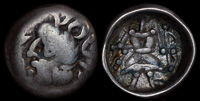
Dahae of Khorezmia 250-130 BCE
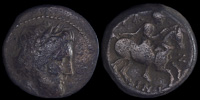
Krannon, Thessaly 350-300 BCE
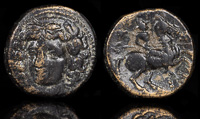
Larissa, Thessaly 4th century BCE
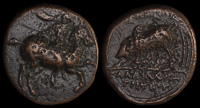
Magnesia ad Maeander 350-200 BCE

Magnesia ad Maeandrum 350-200 BCE

Magnesia ad Maeandrum 350-200 BCE

Magnesia ad Meander, Ionia 350-200
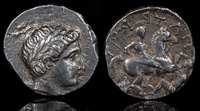
Patraos 335-315 BCE
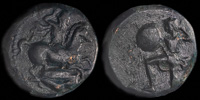
Pelinna, Thessaly 425-350 BCE

Phakion, Thessaly 3rd century BCE
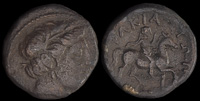
Phakion, Thessaly ca 300-200 BCE
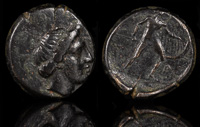
Trikka, Thessaly 400-300 BCE
